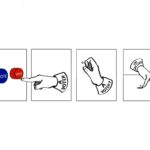In 1988 I was a freshman in college, and the country had just elected George H.W. Bush president. More than half of young voters (53%), ages 18 to 29, voted for Bush, who beat former Massachusetts Gov. Michael Dukakis.
Still, they represented just 20% of the total voter turnout.
Four years later, after I graduated, a slightly smaller percentage of voters in the newly formed 18 to 24 age group (46%) helped Bill Clinton defeat the incumbent Bush. In that election, the youngest voters represented just 11% of total turnout, although voters ages 25 to 29 contributed another 10%. But just like their young counterparts today, there was interest in a third party candidate. Independent Ross Perot received 21% of the 18 to 24 vote and 23% of the vote for ages 25 to 29.
In both cases, older voters came out in much higher numbers to cast ballots.
Clinton had been chasing the youth vote that year. A New York Times headline in June 1992 read, “Clinton Goes Eye to Eye With MTV Generation.”
That was me, the MTV generation. Perot was our Bernie Sanders.
It is now 2024, and the MTV generation of TikTok, or Generation Z, is being courted again and by both presidential candidates, Democrat and Vice President Kamala Harris and Republican and former President Donald Trump.
A New York Times headline in October 2024 read, “ Trump Wants Young Voters, but He’s Nowhere to Be Seen on Snapchat.”
Another 2024 headline from the Times read, “More Money Urgently Needed to Reach Younger and Minority Voters, Organizers Warn Harris Donors.”
The reason for the chase is simple. Estimates show that 8 million youth aged into the electorate in 2024. That was just since the 2022 midterm elections. Gen Z, which represents people born between 1997 and 2012, now has 40.8 million members who are eligible to vote, according to the Center for Information & Research on Learning and Engagement, or CIRCLE, at Tufts University.
This generation already is voting at higher rates than previous generations, including mine.
That’s why we are devoting our fall issue of GJR to Gen Z and the 2024 presidential election.
Every writer, illustrator and photographer for this issue is a member of Gen Z. They talked to voters their age in the battleground states of Michigan, Pennsylvania and North Carolina.
We have stories about trans rights, reproductive freedom, Gaza protests, immigration and the environment because these are issues that matter to many young voters.
Like older voters, they also care about the economy. A U.S. News by Generation Lab found in July that the top issues for voters ages 13 to 34, which include Millennials, is inflation, access to abortion and reproductive rights and gun control and violence.
Approximately 45% of the Gen Z electorate are youth of color. This is a diverse group of Americans who believe in equality and fairness. They are charting their own course and challenging conventions in the workplace.
And they are increasingly using their voice.
As our correspondent in Michigan learned, that state had the highest youth voter turnout rate in the country (36%) in 2022, and currently has one of the highest youth voter registration rates in the U.S.
Pennsylvania also has had high youth turnout in the past three national elections.
North Carolina offers pre-registration, online registration and same-day registration for voting, and our correspondent in Wilmington observed long lines for early voting two weeks before the election.
But Gen Z also has been hard to predict. They initially came out enthusiastically for Harris, giving her a brat summer, but her appeal has since been dampened by Israel’s continued strikes in Gaza and the U.S’s handling of the widening Israel-Hamas war.
We also know that young women have moved left and young men have moved right, which explains why Trump has spent so much time courting undecided young men, the focus of our story from Wisconsin. Women between the ages of 18 and 29 are now 15 percentage points more likely to identify as liberal than men in the same group, according to Gallup.
Young voters are a powerful voice in American politics, accounting for half the population eligible to cast ballots on Nov. 5. The District of Columbia and 23 states allow voters to register up to and on day of the election.
It’s no secret that many young voters are frustrated by the two-party system, and unhappy with their choices in candidates for president. Many are eager for election reform.
This election will ultimately hinge on whether they can overcome that disillusionment to cast their ballots anyway. If they can, it will be hard to ignore them.
Jackie Spinner is a professor at Columbia College Chicago and faculty advisor to the Columbia Chronicle. She covered her first election from the Daily Egyptian newsroom at Southern Illinois University Carbondale. She is the editor of GJR.

